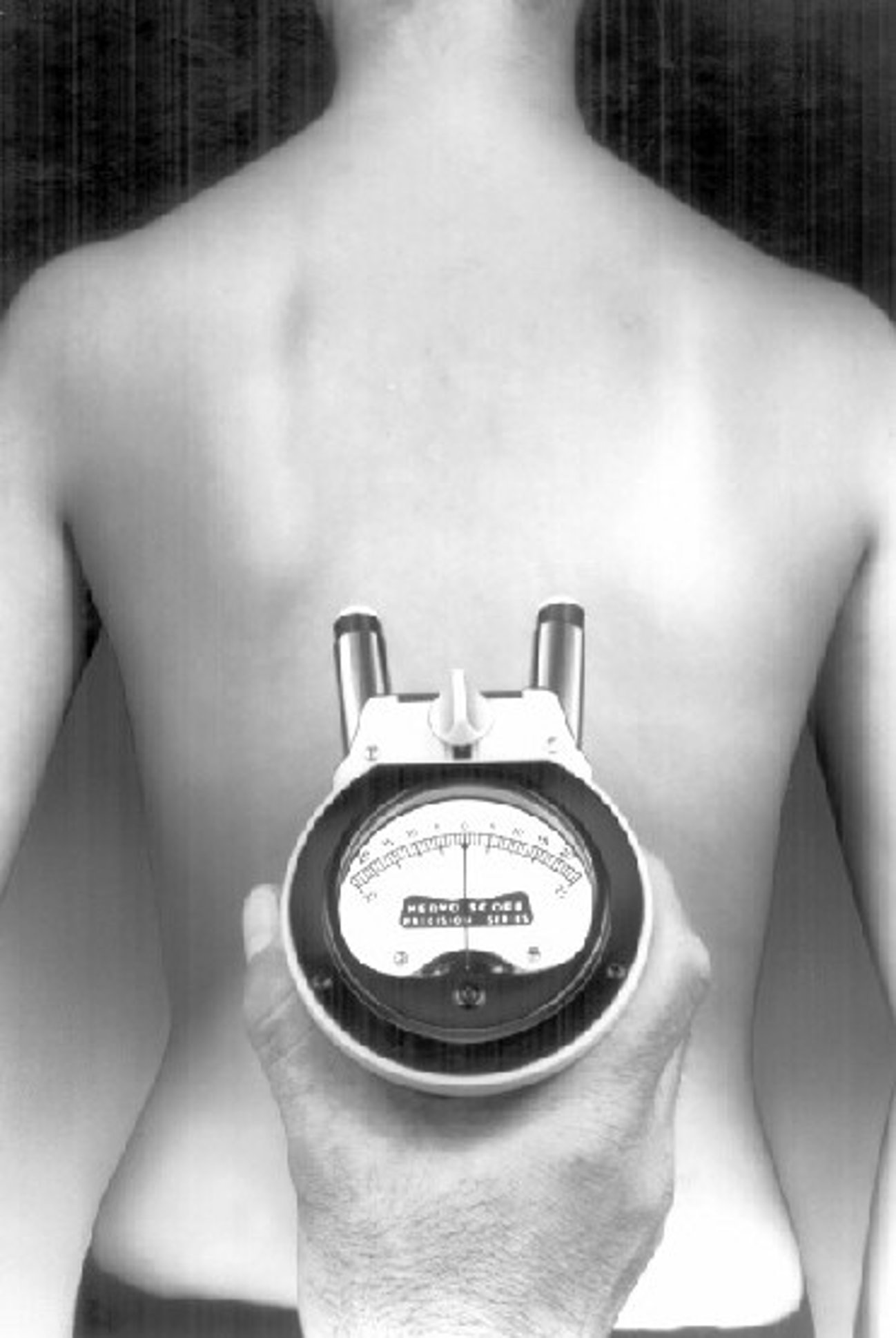Written by: Brooke Preston-Chiropractic Intern at Zen Chiropractic Inc. DBA Zen Healing Center
What is the nervoscope?
The nervoscope is a thermal device that provides a comparative measure of small differences in temperature from one side of the skin of the back and paraspinal musculature to the other. Thermocouple instruments such as the nervoscope and delta T consist of two thermal sensors and a housing unit(8). When the sensors are at different temperatures, this causes a movement of the needle on the screen of the device, allowing for objective or measurable heat findings. These objective findings can be used as a part of the chiropractic exam and also reviewed at the end of the visit to show objective, numerical evidence of a change in local body temperature.
Why would this change in heat occur in our patient?
Thermography findings are largely accepted as resulting from changes in underlying blood vascularity(10, 11). There are two main mechanisms that are thought to cause these changes. The first being the production of inflammation and release of inflammatory mediators. Many know the signs of inflammation as swelling, heat, altered movement, redness, and pain. The chiropractor is looking for a combination of these in their exam. In this case, the heat produced by local inflammation is what is being measured by the nervoscope. The second mechanism being the cutaneous axon reflex. This reflex occurs as a result of increased activity of recurrent meningeal, or sinuvertebral, nerve. This nerve innervates the intervertebral disc(8). The intervertebral disc is a piece of fibrocartilage that helps distribute loads to the spine. Due to the cutaneous axon reflex, sweat glands and blood vessels in the skin have altered function at one single level and side of the spine which results in a temperature difference(3, 4, 7, 8, 13).
Is this test reliable?
Handheld devices, common to the chiropractic profession, have been evaluated and shown to give moderate to excellent inter-examiner reliability over short time durations(2, 12). Good intra and inter-rater reliability have been found when scanning the thoracic spine, or middle back, in studies done on the nervoscope, however, these results did not extend to the cervical spine, or neck (1).
In Plaugher’s study to determine the reliability of the practitioner in comparison to themselves and other practitioners, found fair-to-moderate reliability in one area and substantial in another(9). All of the patients in this study were asymptomatic or without symptoms. With the mechanism of heat changes described above it is reasonable to assume that with a test group of symptomatic patients there would be even greater reliability results, however, further testing needs to be done with dual probe instrument thermography to extrapolate any sort of conclusions. In this authors opinion, this particular study’s design would be the model to follow for further studies(9).
Is there controversy with the equipment?
Some have reservations about the utilization of the nervoscope and seek to discredit it, however, it is important to understand the credibility and motives of such voices. One man is Stephen Barrett. The US court system declared that “Stephen Barrett is biased and unworthy of credibility” in the NCAHF v. King case. Originally a psychologist, he was forced to give up his medical license in 1993. However, due to Barrett’s degree, people trust him whether his license was revoked or not. Barrett makes money off of posting inflammatory content tearing down anything that doesn’t match his specific beliefs to his blog, Quackwatch and the blog that he co-authors with a Doctor of Chiropractic, Samuel Homola, Chirobase. There are many websites that question the validity and motives of Dr. Stephen Barrett(5, 6).
Homola, another voice against nervoscope utilization, receives money from traffic to chirobase. Homola’s books are readily advertised on the site and the more traffic these posts get, the greater chance he has of padding his retirement fund(5). It is important to consider the financial gain these two stand to make as a potential bias and to not discount or discredit instrumentation based on the opinion of few where research encouraging its utilization is available.
References:
(1) Chang L, Abernathy M, O’Rourke D, Dittberner MK, Robinson C. The evaluation of posterior thoracic temperatures by telethermography, thermocouple, thermistor, and liquid crystal thermography. Thermocouple 1985;1:95-101
(2) DeBoer KF, Harmon RO, Chambers R, Swank L. Inter and Intraexaminer reliability study of paraspinal infrared temperature measurements in normal students. Research Forum 1985; Autumn:4-11
(3) Guyton, AC. Textbook of medical physiology. Sixth ed. Philadelphia: W.B. Saunders Co., 1981:710
(4) Hamilton BL. An overview of proposed mechanisms underlying thermal dysfunction. Thermocouple 1985: 1:81-7.
(5) https://www.chirobase.org. Web. 2018.
(6) https://www.quackwatch.org. Web. 2018.
(7) Mitchell GAG. Anatomy of the autonomic nervous system. London: E and S Livingstone Ltd, 1955:116-118.
(8) Plaugher, G. Textbook of Clinical Chiropractic. P93-97
(9) Plaugher G., Lopes M., Melch P., Cremata E., The Inter and Intraexaminer Reliability of a Paraspinal Skin Temperature Differential Instrument
(10) Plaugher G. Skin temperature assessment for neuromusculoskeletal abnormalities of the spinal column: a review of the literature. J. Manipulative Physiol Ther 1992;15:July/Aug
(11) Rademacher, WJ. A Premise for Instrumentation.
(12) Spector B., Fukuoka F, Kanner L., Thorschmidt E. Dynamic thermography: a reliability study. J Manipulative Physiol Ther 1981;4:5-10
(13) Wall PD, Devor M. Sensory afferent impulses originate from dorsal root ganglia as well as from the periphery in normal and injured rats. Pain 1983;17:321-339.
Note: This blog article is written by an intern that has a bright future in Chiropractic. She is eventually going to lead her practice in her community and hopefully the Gonstead Clinical Study Society as well. Dr. Zen Matsuda D.C. G.C.S.S. Diplomate, C.C.W.P

